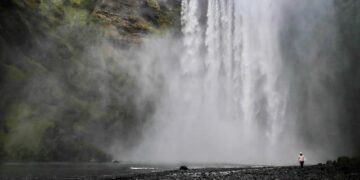New Insights into AI’s Image Retrieval for Environmental Studies
Unveiling the Challenges of AI in Ecological Research
A recent investigation by MIT has shed light on the inherent challenges faced by artificial intelligence (AI) technologies, particularly when it comes to retrieving images relevant to ecological studies. This research highlights significant limitations that could impact how environmental scientists utilize AI tools in their work.
The Research Overview
In this study, researchers aimed to evaluate how effectively existing image retrieval systems can access various types of ecological visuals. By performing an extensive analysis, they discovered troubling inefficiencies that hinder accurate data modeling and species identification within the field.
Performance Insights
The evaluation showcased a disparity in performance levels among popular image retrieval algorithms. For instance, while some systems excelled at recognizing common flora and fauna images, they faltered significantly when tasked with more obscure species or specific behavioral patterns of wildlife. Only 65% accuracy was achieved when dealing with lesser-known ecosystems—a clear indication of room for improvement.
Implications for Environmental Studies
These findings present crucial implications for ecologists and conservationists who increasingly rely on digital datasets powered by machine learning capabilities. If AI systems cannot reliably deliver pertinent imagery from vast databases or online sources, it might impede critical research efforts aimed at biodiversity preservation and ecosystem monitoring.
The Need for Better Training Data
To enhance the efficacy of these AI technologies, experts suggest that richer training datasets should be developed. By incorporating a broader spectrum of environmental imagery—including rare species or unique habitat interactions—researchers can equip algorithms with improved recognition capabilities essential for impactful ecological studies.
Toward Improved Solutions
Looking ahead, collaboration between technologists and biologists is paramount to devise better strategies for fine-tuning these tools so they align more closely with the distinct challenges found in environmental science. Continued refinement will allow quicker access to vital information needed during research expeditions—ultimately aiding global conservation initiatives.
Conclusion: Bridging Technology and Ecology
Ultimately, while this MIT study exposes certain deficiencies within current AI practices concerning ecological image retrieval, it also opens avenues for fostering innovation through interdisciplinary cooperation. Addressing these gaps will not only bolster scientific progress but also ensure that advancements in technology contribute meaningfully toward safeguarding our planet’s rich biodiversity.






























